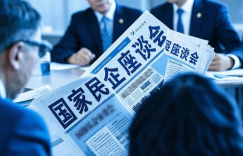
Today is the first day of the Chinese New Year. First of all, I wish you a happy Spring Festival! I wish you a happy New Year and hope that you will be able to move forward freely in the new year.
Today’s topic, I promise, will open up most people’s minds. In the previous courses, I talked about a lot of regional development and urban development issues, because it is indeed related to everyone’s employment, house purchase and even life choices for themselves and their children, etc., but I mentioned the eastern region where “economically large provinces take the lead”, or star cities in the central and western regions, such as Chengdu, Hefei, Zhengzhou, etc., in short, they are all top students.
But top students, we all know that it’s not that we don’t want to go, but sometimes we can’t go. And the cost of living in these cities is often very high. Well, today I will provide another idea to talk about another type of very cost-effective small city and the new wave of wealth behind it.
The rise of new resource cities and the unicorn phenomenon
I noticed that since three or four years ago, a group of new resource cities in China have risen rapidly, and are mass-producing unicorn companies and even listed companies. And many of them are small counties that sound very unfamiliar to you.
When it comes to the label of resource-based cities, many people may first think of resource-depleted cities, such as Hegang. You may shake your head and sigh that these are cities without a future. However, what I want to talk about today is a new type of resource-based city that is completely different from this stereotype, which will break your inherent perception of resource-based cities. This is a very interesting round of new wealth reshuffle.
Before talking about these cities, let me explain what unicorn companies are. It refers to startups with high valuations, usually more than US$1 billion, and have not yet been listed. Pay attention, high valuations and no listing are the two key elements of wealth stories.
According to the 2022 Unicorn List released by Forbes China, there are 74 new Chinese unicorn companies in China, of which 6 are from unknown county-level cities, namely Daye, Shanghang, Tengzhou, Luoding, Tongxiang and Taicang. Hearing this, are you confused? Why are there all unfamiliar names on the famous list! Does it test everyone’s geographical knowledge level? In fact, even the “2024 Global Unicorn List” released by Hurun Research Institute shows this trend. The reason behind this is that many cities are relying on the abundant local “new resources” to cultivate a group of high-tech unicorn companies.
New energy and new materials: new engines for industrial development
As of November 2024, the Ministry of Industry and Information Technology has announced a total of 80 national advanced manufacturing clusters in two batches. Through this list, I saw more small cities and unicorn companies that rely on “new resources” for development: for example, Yuanshi County, Hebei, is rich in chromium ore, silicon ore, quartz stone and other resources; Shanghang County, Fujian, has large reserves of gold, copper and limestone; Luoding City, Guangdong, has considerable manganese ore, quartz ore and limestone; Daye City, Hubei, also contains copper ore, iron ore, wollastonite, etc.
Most of the unicorns that came out of these counties are linked to the research and development and manufacturing of new materials. For example, Kuntian New Energy is engaged in the research and development and production of negative electrode materials for lithium-ion batteries, Del Technology is a manufacturer of electronic chemical materials, Weirong Technology produces high-end chip multilayer ceramic capacitors, and Rongtong Hi-Tech is a research and development manufacturer of positive electrode materials for lithium batteries. In addition, as the world’s largest cobalt material industrial base, Quzhou has attracted many lithium battery material companies, including the unicorn company Yida New Energy.
From my description just now, it is not difficult to find that this new industry oriented by “new resources” is mostly concentrated in the two industries of new energy and new materials. Among them, a typical example is Jinchang, Gansu. In the past, Jinchang, like many resource-based cities, faced problems such as a single industrial structure, a short chain, and a low level of clustering. Today, Jinchuan Group, located in Jinchang, is a Fortune 500 company. 30% of its nickel and 60% of its cobalt are used to produce power battery materials, and 70% of its silver, 30% of its platinum group metals and 45% of its copper are deep-processed to become a series of new material products. As a result, the Jinbailanwu non-ferrous metal cluster led by Jinchang has suddenly become a national advanced manufacturing cluster. Moreover, Jinchang’s GDP growth rate has been very high in recent years, with a growth rate of 11.5% in 2023 and 19.3% in the first three quarters of this year. According to the Gansu Daily, Jinchang’s GDP growth rate in the first three quarters was the highest in the country.
To give another example, Baotou is a representative of the transformation of renewable resource cities, transforming from a “grassland steel city” to a “rare earth capital”. Behind this is the development of the new energy industry. In the first three quarters of last year, the added value of Baotou’s rare earth industry increased by 29%. Among the 25 companies to be listed in Baotou, there are 9 rare earth companies. So think about it, is it possible that such small and medium-sized cities with densely populated companies to be listed may have a higher cost-effectiveness and be a suboptimal option? After all, these cities are the kings of cost-effectiveness in third- and fourth-tier cities.
Moreover, these cities have suddenly emerged in recent years, and many people have not yet realized it, which also means that there may be enough opportunities. You must know that in 2022, the first batch of 45 national advanced manufacturing clusters announced by the Ministry of Industry and Information Technology were mainly distributed in first- and second-tier cities, and there were almost no third- and fourth-tier cities in the west. By 2024, many of the 35 newly added clusters will be located in third-tier, fourth-tier and even fifth-tier cities in the western region, relying on their natural resource advantages. These new resource cities are producing unicorns in batches, which are all new wealth and new opportunities.
New logic of city selection: facing the future
Okay, now that we know these new resource cities, let’s talk about how they affect personal choices?
Let me directly say my judgment: This wave of high-tech diffusion is advancing from first-tier cities to second-tier and third-tier cities, and even county towns, and manufacturing companies are the main force of this wave. This has a strong relationship with the national strategic orientation, and also means that new characteristics of high-end manufacturing-oriented industrial layout are beginning to emerge, and remote small cities have become the birthplace of new generation unicorns. This is an unexpected scene that was completely invisible before.
In the past, people chose cities, employment and life, basically according to administrative levels. First, first-tier cities such as Beijing, Shanghai, Guangzhou and Shenzhen, then quasi-first-tier cities such as Chengdu and Hangzhou, and almost chose provincial capital cities. In short, administrative levels determine the future of cities and everyone’s choices.
But things have changed in recent years. In eastern provinces such as Jiangsu, Zhejiang, and Guangdong, many new prefecture-level cities are rising rapidly, and even some county-level cities have come on the scene. More importantly, they are no longer traditional “trade-oriented” small cities, such as Yiwu; instead, they are “future-oriented” cities that rely on strong resources and strong technology to drive development. This change is amazing. With the rise of these new resource small cities and unicorn companies in small cities, they are becoming high-cost-effective places.
Capital is the most sensitive in this regard. An interesting phenomenon that has emerged is that recruiting county-level investment managers has also become a new trend for investment institutions. Large funds representing high salaries have also set off a wave of going to county towns. According to my observation, some county-level investment positions offer a monthly salary of 30,000, which is 7 times the local average salary. This is the new wave that must be discovered.
So, should we also update the criteria for selecting cities? What criteria should we look at? Don’t look at the administrative level, or even the current size, but look at the future industrial structure of the city and its position in the future industrial chain. Its resource and technology gathering ability ultimately determine the development potential of the city. In a word: you have to choose a city that is oriented to the future.
Such a city is in the early stage of rapid development. If you choose the right one, it is equivalent to getting the original stock of the city’s development. Isn’t it much better than losing the cost-effectiveness in the stock game in the “declining” big city? Especially for young people, the cost-effectiveness is very high. You know, the unicorn companies in these places are likely to have good salaries, and the housing prices and living costs are still very low.
In summary, when choosing a city, you have to choose a city that is oriented to the future and has emerging increments; if a big city can no longer be oriented to the future, you must not choose it, especially for young people.



